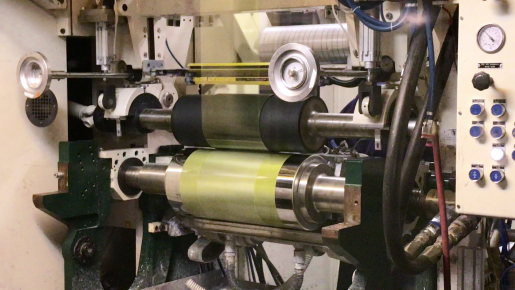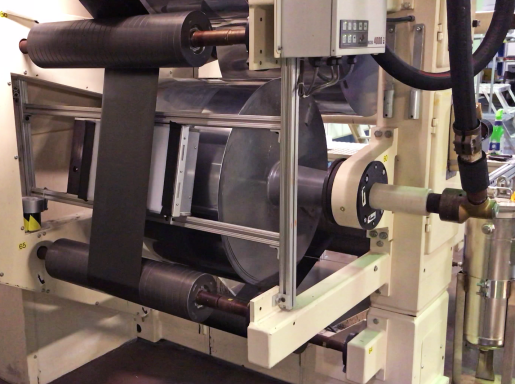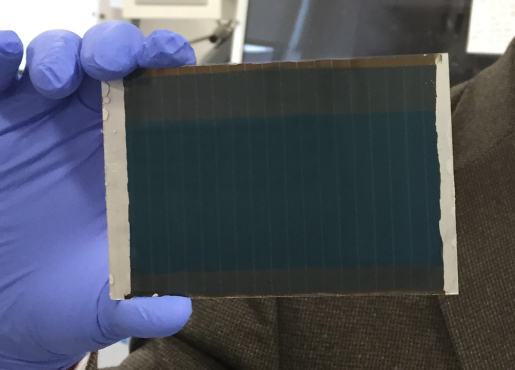Learn how Energy Materials Corporation (EMC) has been developing a low-cost process to manufacture perovskite photovoltaic (PV) modules.
Solar Energy Technologies Office
December 15, 2020Most solar cells on the market today are made by sawing blocks of silicon into thin silvery wafers, which are then etched and coated. The process can take hours, and valuable material is lost, as nearly half the silicon becomes sawdust. Thin-film solar modules, by contrast, are made by coating large surfaces, such as glass or plastic sheets, and can take significantly less time to make—there’s no sawing or etching.
With a $2 million award from U.S. Department of Energy Solar Energy Technologies Office (SETO) in 2017, Energy Materials Corporation (EMC) has been developing a low-cost process to manufacture perovskite PV modules. But EMC faces a huge challenge: making perovskite cells more durable. Perovskite degrades when exposed to moisture, light, and heat.
Jinsong Huang has been researching this challenge since 2014. With over $1 million in SETO funding, Huang and his team at the University of Nebraska-Lincoln examined how to improve perovskite PV cells’ strength and stability so they can better absorb sunlight, convert it to electrical energy, and resist degradation. That work resulted in the development of solar cells that use sunlight more efficiently than conventional solar cells do.
Coupling a perovskite cell with a silicon cell to form a tandem cell can convert sunlight into electricity better than the solar cells on the market today. Support from SETO helped Huang’s team make a tandem cell with Arizona State University researchers that yielded a 25.4% efficiency level, a world record in 2018.
EMC CEO Stephan DeLuca invited Huang to collaborate to scale up the processes that produce high-efficiency perovskite solar cells. In lab experiments, Huang used spin-coating: The base of the solar cell is placed in a machine, liquid perovskite is deposited onto it, and the machine spins to spread the perovskite into a thin, even layer.
But spin-coating is good for making only small batches of solar cells. It would take too long and cost too much for industrial-level production.
With blade-coating, however, a machine spreads liquid perovskite on the cell’s base like it’s buttering toast. Huang designed a new liquid perovskite solution that increased the coating speed by five times—a breakthrough with industrial-level manufacturing potential.
EMC and Huang then teamed up with Eastman Kodak, the onetime film behemoth, to lease its high-speed roll-to-roll printers—the same printers used to make photographic film—to fabricate perovskite solar cells.
These printers can coat 1,000 feet of film per minute. EMC hopes to coat perovskite at 100 feet per minute, a speed that could produce enough solar panels to generate 4 gigawatts of electricity per year. For context, the entire United States installed 2.5 gigawatts of residential solar in 2019.
While they continue working to accelerate other processes without sacrificing quality, Huang and DeLuca say they’re on the right track. In 2019, SETO awarded them about $3 million to help them stay on it. And when they reach the finish line, it’ll be their Kodak moment.
Learn more about SETO’s perovskite research.




